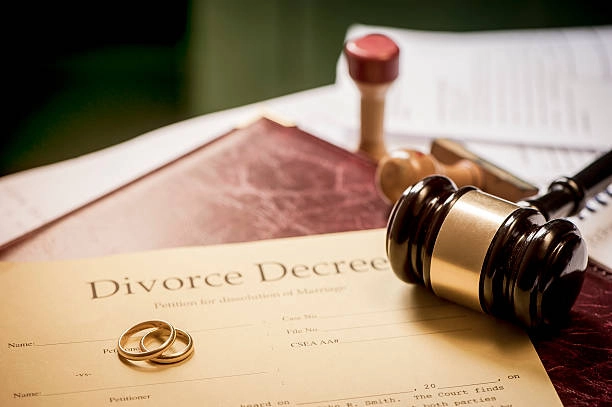File for Divorce Without a Lawyer: Step-by-Step Guide

Filing for Divorce Without a Lawyer: What You Need to Know
Filing for divorce without legal representation may seem overwhelming, but with the right information and preparation, you can successfully navigate the process. Whether you’re looking to save on legal fees or prefer to handle the proceedings independently, understanding the steps involved is essential. This guide will walk you through each stage of filing for divorce without a lawyer, ensuring you remain informed and organized throughout the process.
Preparing for Your Divorce: Gathering Essential Documents
Proper preparation is critical when filing for divorce without a lawyer. Having all essential documents on hand can simplify the filing process and reduce the chances of errors or delays.
Personal Identification Documents
Start by collecting personal identification documents such as your driver’s license, Social Security card, and marriage certificate. These documents are necessary to verify your identity and the legitimacy of your marriage during the divorce proceedings.

Financial Documents
Next, gather all financial documents that reflect your current financial standing. This includes:
- Bank statements (checking, savings, investments)
- Tax returns for the past three years
- Pay stubs or income statements
- Documentation of debts (credit cards, loans, mortgages)
- Property ownership documents
These documents play a significant role in determining asset division, alimony, and child support.
Child-Related Documents
If you have children, compile documents related to their well-being, such as:
- School records
- Health care documents
- Existing custody agreements
Having these documents in place helps ensure that child custody and support arrangements are clearly defined.
Step-by-Step Guide to Filing for Divorce Without a Lawyer
The following step-by-step guide will help you navigate the divorce process without legal representation.

Step 1: Determine Your Grounds for Divorce
Each state has specific grounds for divorce, typically categorized as fault-based or no-fault. No-fault grounds, such as irreconcilable differences, are often simpler to file.
Visit your state’s official court website to identify acceptable grounds for divorce in your jurisdiction.
Step 2: Obtain and Complete the Divorce Forms
Most state courts offer downloadable divorce forms on their official websites. Commonly required forms include:
- Petition for Divorce (or Complaint for Divorce)
- Financial Affidavit
- Child Custody Agreement (if applicable)
Complete these forms accurately to avoid delays in the process.
Step 3: File the Divorce Papers with the Court
Once the forms are complete, submit them to your local court clerk’s office. Be prepared to pay a filing fee, which varies by state. If you cannot afford the fee, inquire about a fee waiver application.
Upon filing, you will receive a case number, which is essential for tracking your divorce status.
Step 4: Serve Your Spouse with Divorce Papers
Serving your spouse with the divorce papers is a mandatory legal requirement. This can typically be done through:
- Process server
- Certified mail
- Sheriff’s office
Your spouse will have a specific time frame to respond, generally between 20 to 30 days.
Step 5: Await Your Spouse’s Response
If your spouse agrees to the terms, you may proceed with an uncontested divorce. However, if disputes arise, mediation or court hearings may be necessary.
Step 6: Attend the Final Hearing (If Required)
In some cases, a judge may require a final hearing to review your case. Prepare by organizing your documents and outlining key points related to asset division, child custody, and support.
Once the judge approves the divorce, you will receive a signed divorce decree.
Navigating Court Procedures Without a Lawyer
Handling court procedures without a lawyer can be intimidating, but preparation can make a significant difference.
Understanding Court Requirements
Each court has specific procedural requirements. Familiarize yourself with these by visiting your local court’s website or speaking with a court clerk.
Presenting Your Case
If your divorce requires a court hearing, present your case clearly and concisely. Stick to the facts and avoid unnecessary emotional arguments. Bringing organized documents will support your case.
Handling Disputes
If disputes arise regarding asset division, child custody, or alimony, consider mediation. Mediation involves a neutral third party facilitating an agreement between you and your spouse.
Ensuring Effective Communication with Your Spouse
Maintaining respectful and clear communication with your spouse can simplify the divorce process.
Use “I” Statements
When discussing sensitive topics, use “I” statements to express your feelings without placing blame. For example, say, “I feel concerned about our child’s schedule,” instead of, “You never stick to the plan.”
Set Communication Boundaries
Establish guidelines for communication, such as using email or scheduled phone calls. This can prevent heated arguments and promote constructive discussions.
Prioritize Children’s Needs
If children are involved, prioritize their well-being in all discussions. Demonstrating cooperation benefits them during this challenging transition.

Finalizing Your Divorce
The final step in filing for divorce without a lawyer involves ensuring all legal matters are settled.
Review the Settlement Agreement
Carefully review your divorce settlement to ensure both parties agree on asset division, alimony, child support, and custody arrangements.
File the Final Documents
Submit the final divorce decree and related documents to the court. Attend any required hearings to finalize the divorce.
Obtain Certified Copies
Request certified copies of your divorce decree for your records. This document is necessary for updating legal information such as your marital status and financial accounts.
Update Legal Documents
Following your divorce, update your will, insurance policies, and financial documents to reflect your new status.
Frequently Asked Questions (FAQs)
1. Can I file for divorce without a lawyer in any state?
Yes, you can file for divorce without a lawyer in all states. However, specific requirements and processes may vary by state. Check your state’s court website for accurate information.
2. What if my spouse refuses to sign the divorce papers?
If your spouse refuses to sign, you can still proceed with a contested divorce. The court will determine the terms based on evidence and testimonies.
3. How long does it take to finalize a divorce without a lawyer?
The timeline varies by state and case complexity. Uncontested divorces typically take a few months, while contested cases may extend longer.
4. Can I modify the divorce agreement later?
Yes, you can request modifications to child custody, support, or alimony if there are significant changes in circumstances.
